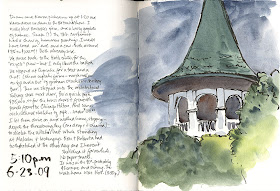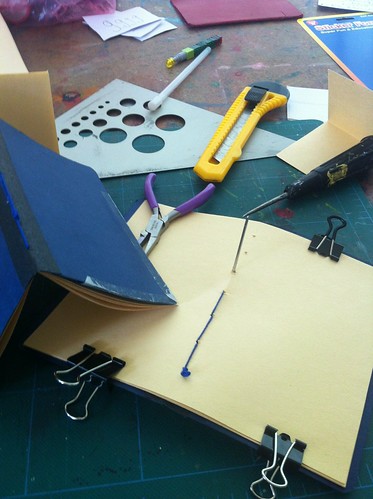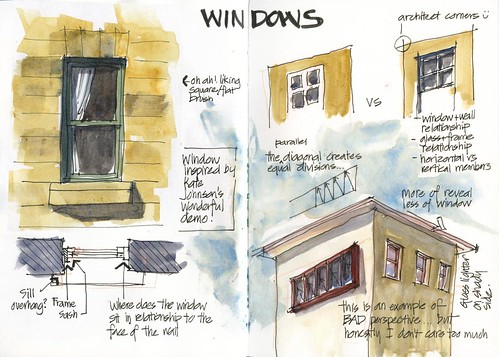 |
| Pentel Pocket Brush Pen Sketch and watercolor . Click on the image to view an enlargement. |
I've been doing a series of posts on intermittent Fridays in which I suggest projects which can be done in an afternoon or on the weekend.
Today I posted the first in a multi-part
series on getting used to the Pentel Pocket Brush Pen. If you have one of these pens but haven't used it much, or have seen people using them and wondered if the pen might be for you, check out the post and the series (there will be at least 4 more on the Pentel Pocket Brush Pen in future weeks).
I'm also hoping to get some videos up so that you can see me drawing with the pen (but International Fake Journal Month is making my life a little full right now).
You might ask yourself, "Why would I ever use a brush pen? There doesn't seem to be any control, the lines are so dark…" and so on.
It isn't for everyone. But as with any tool practice will give you greater control. I'll also show ways you can work with its lines and paint in later segments.
I believe you owe it to yourself to at least give it a try because it might just be the increase in line vocabulary for which you're looking.
I'm not in anyway connected with Pentel or anyone who sells these pens. I just like to see the happy smiles on the faces of people when they pick one up and begin to sketch with it.
Why the Pentel Pocket Brush Pen? It's got individual synthetic hairs that make up a resilient and springy tip that allows you to have sweeping as well as dry brush strokes. One friend admitted he'd never tried the PPBP because other brush pens he'd tried had no body in the brush tip. He walked out of my studio with one and has been using it ever since. While I can't give everyone in the world one of these pens (I wish I could, but I can't) I can let people know how fun it is to use.
(Note: I have also found the tip to be long-lasting. I use my PPBP daily, sometimes for several hours at a time and my pens last a long, long time.)
Also it has rich black ink which is waterproof (immediately on most papers depending on the paper's sizing) and that means you can paint over it right away with your watercolor or gouache washes.
I have always been a rather tight and detail oriented sketcher. OK, let's just say fussy. I typically use a dip pen or a fine point pen of some sort. The switch to the brush pen was massive for me because it meant darker bold lines. But I embraced the difference because it gave me access to quick sketching on a larger scale and because it helped me hone my editing capabilities. While I have more editing work to do in my sketching (and I'll enjoy every day of it) I have found that using the PPBP has actually improved my work with other pens as well.
And it's a great way to warm up and let your hand move across the page.
For all those reasons I think you should give the PPBP a try. For the next several weeks I'll be posting a new Project Friday with different exercises for using this pen.
I urge three things on people: Chocolate Chocolate (not a typo) Cake from Cafe Latte, journaling (both written and visual), and using a PPBP. All three are great fun. It can also be argued that all three are addictive. But the last two can only have a positive effect! I hope you'll give the PPBP a try.
Don't Be Confused: Some people are confused by the various pens that Pentel makes. Here is a post I wrote about two of Pentels brush pens:
The Pocket Brush and the Color Brush. You'll find out pros and cons for both there.
At the end of last year I started using
Pentel's Aquash Brush Pigment Ink Filled Brush (I know, I know, but it is what it says on the package and you have to add the Pigment Ink Filled bit because they also call their waterbrush, which is empty, Aquash). I will have something more to say about this brush pen in my series on getting used to the PPBP, but in the meantime you can read my adventures of first using it by using my blog's search engine to look for "Aquash" posts.





























